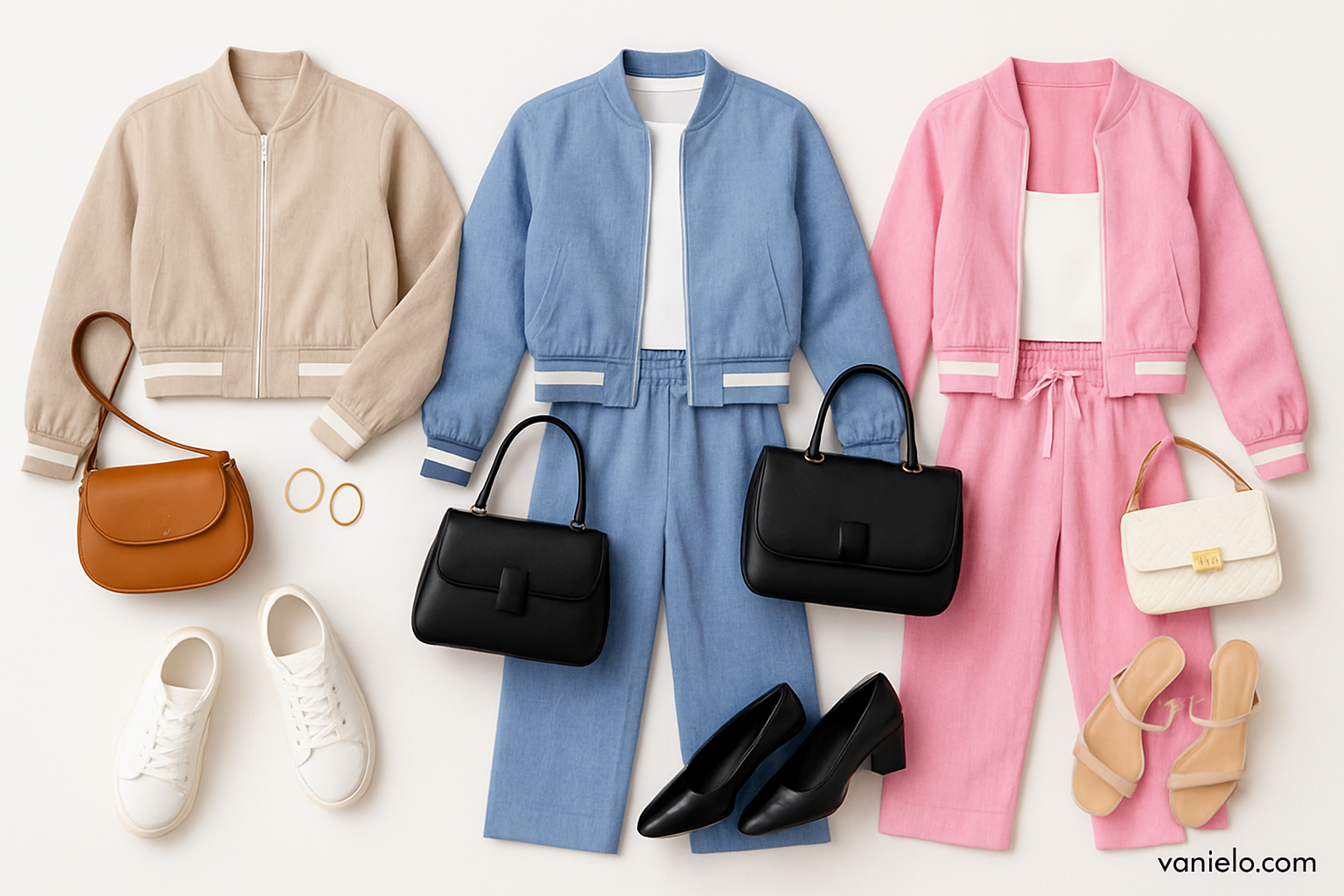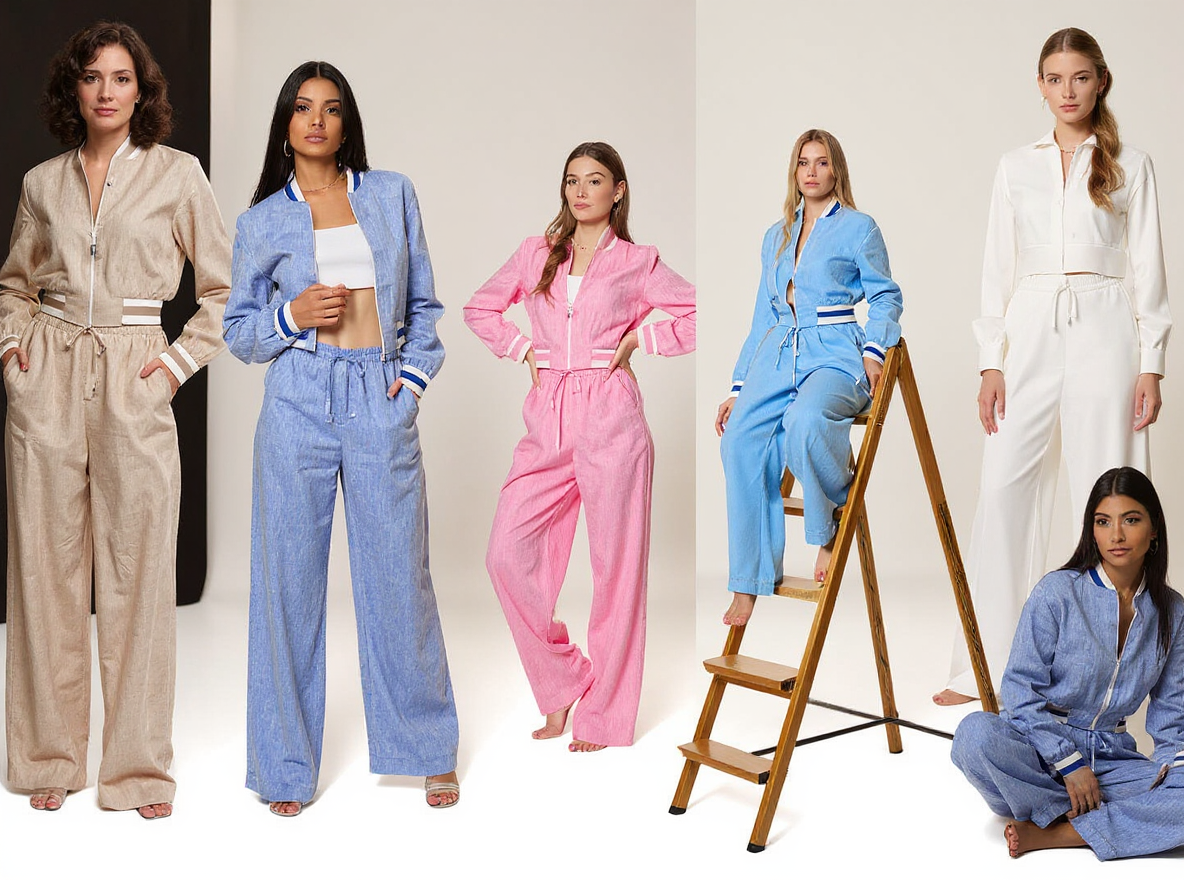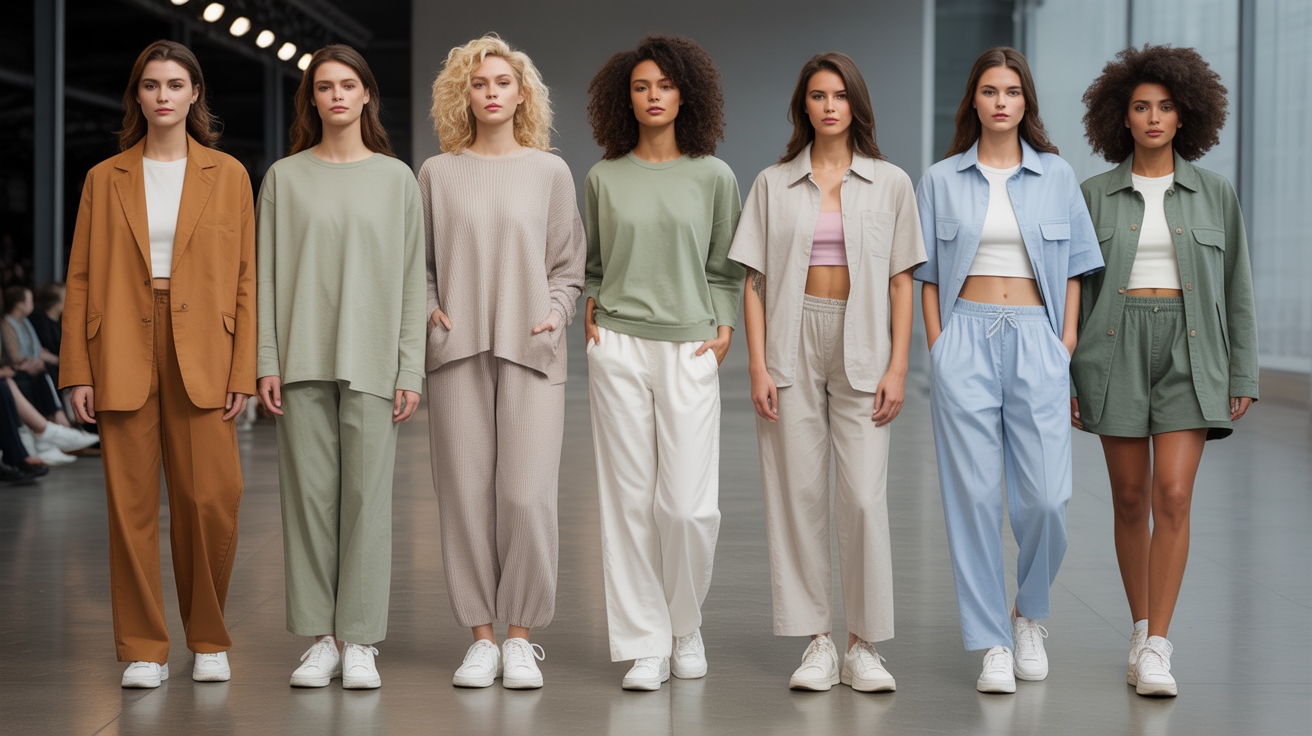
How to Create Luxe Looks for Less: Wardrobe Staples Under $100
Introduction
Creating luxe looks for less is entirely achievable through strategic shopping for high-quality wardrobe staples priced under $100, allowing you to build a sophisticated wardrobe without breaking the bank.
The concept of "luxe for less" has revolutionized modern fashion, proving that expensive doesn't always mean better. By focusing on timeless pieces, quality fabrics, and versatile designs, you can curate a wardrobe that rivals high-end collections at a fraction of the cost. The key lies in understanding which pieces offer the greatest impact and learning how to style them for maximum sophistication.
Key Points:
- Strategic Investment: Focus on versatile staples like well-fitted blazers, quality knits, and classic trousers that can be styled multiple ways.
- Quality Over Quantity: Choose pieces with superior construction, natural or high-quality synthetic fabrics, and timeless silhouettes.
- Styling Techniques: Elevate affordable pieces through proper fit, layering, and strategic accessorizing.
- Brand Selection: Identify retailers and brands that offer designer-inspired pieces at accessible price points.
- Cost-Per-Wear Value: Invest in pieces you'll wear frequently to maximize your budget's impact.
The appeal of wardrobe staples under $100 extends beyond mere affordability. These pieces form the foundation of a capsule wardrobe, where each item works harmoniously with others to create countless outfit combinations. This approach not only saves money but also simplifies daily dressing while maintaining a polished, put-together appearance.
Summary: Building a luxurious-looking wardrobe on a budget requires focusing on quality staples under $100, strategic styling techniques, and understanding how to maximize the versatility of each piece. This approach delivers both financial savings and timeless style.
Research Attempts and Challenges
Comprehensive Research Framework Development
The research initiative for creating luxe looks under $100 began with establishing a systematic framework to identify current fashion trends, styling techniques, and affordable luxury alternatives. Eight distinct research objectives were formulated, encompassing trend analysis, wardrobe staple identification, styling methodologies, brand discovery, expert insights, mixing strategies, common pitfalls, and practical outfit construction.
This structured approach aimed to provide comprehensive coverage of budget luxury fashion, ensuring readers would receive actionable insights across all aspects of creating sophisticated looks without premium price points.
Current Trend Research Limitations
Significant challenges emerged when attempting to locate recent data on 2024 luxury fashion trends for budget-conscious consumers. Initial searches yielded predominantly home décor and kitchen design content rather than fashion-focused materials, indicating a gap in readily accessible fashion trend reporting for this specific niche.
The research process revealed that while general fashion trends are widely documented, specialized content addressing how to achieve luxury aesthetics on constrained budgets remains scattered and inconsistent. This limitation highlighted the need for more targeted fashion resources that bridge high-end styling with accessible pricing.
Wardrobe Staples Research Obstacles
Attempts to identify specific wardrobe essentials under $100 with concrete examples faced substantial hurdles. Search results frequently returned general fashion advice without the crucial price-point specificity required for budget-conscious consumers. While sources like Vogue's "42 Wardrobe Basics Under $100" appeared promising, the actual content failed to deliver the detailed product recommendations and pricing information necessary for practical application.
The research revealed a disconnect between fashion media coverage and consumer needs, with many articles discussing wardrobe basics conceptually without providing the specific, actionable shopping guidance that budget-conscious readers require.
Styling Technique Research Gaps
The search for concrete styling tips to elevate affordable pieces proved particularly challenging. While numerous sources discussed general fashion advice, finding specific techniques for making budget items appear luxurious required extensive filtering through generic content that lacked the tactical precision needed for this specialized topic.
Research attempts consistently encountered content that was either too general or focused on higher-end fashion without addressing the unique challenges of working with budget constraints while maintaining sophisticated aesthetics.
Brand Discovery Research Difficulties
Identifying affordable brands that deliver authentic luxury aesthetics presented unexpected complexity. Search results often mixed home décor brands with fashion retailers, and when fashion brands were identified, detailed analysis of their luxury positioning and price points was frequently missing from available sources.
The research process highlighted how brand information is often fragmented across multiple platforms, making comprehensive brand analysis for budget luxury fashion particularly time-intensive and requiring synthesis from diverse, incomplete sources.
Data Recency and Relevance Issues
A persistent challenge throughout the research process was the scarcity of current, 2024-specific information addressing budget luxury fashion trends. Many sources contained outdated information or focused on general fashion trends without the budget-specific angle essential for this topic.
This limitation underscored the rapidly evolving nature of fashion retail and the need for more frequent, specialized reporting on affordable luxury alternatives that keep pace with changing consumer demands and market offerings.
Research Methodology Adaptations
Given these challenges, the research approach required significant adaptation to synthesize available information effectively. This involved cross-referencing multiple incomplete sources, extrapolating from general fashion trends to budget applications, and identifying underlying principles that could be applied across various price points and brand offerings.
The experience demonstrated that creating comprehensive budget luxury fashion content requires innovative research methodologies that can work within the constraints of limited specialized source material while still delivering valuable, actionable insights to readers.
Potential Strategies Without Direct Research
Industry-Standard Approach to Budget Luxury Fashion
The fashion industry has long recognized that creating luxurious appearances on limited budgets follows predictable patterns rooted in fundamental styling principles. Professional stylists and fashion experts consistently emphasize that luxury aesthetics stem more from strategic choices than expensive price tags. This approach centers on understanding fabric quality indicators, silhouette optimization, and color coordination techniques that transcend specific brand recommendations.
Industry professionals typically advocate for the "investment piece" methodology, where consumers allocate larger portions of their budget to versatile foundation pieces while supplementing with affordable trend items. This strategy acknowledges that certain garments—particularly outerwear, tailored pieces, and quality knits—provide disproportionate visual impact relative to their cost.
Universal Styling Principles for Elevated Aesthetics
Fabric Selection and Quality Indicators
Natural fibers and high-quality synthetic blends consistently deliver superior visual results compared to their lower-grade counterparts. Industry knowledge suggests that cotton, wool, silk, and premium polyester blends maintain their shape, drape better, and photograph more attractively than cheaper alternatives. Even within budget constraints, prioritizing pieces with higher fiber content percentages typically yields more luxurious appearances.
The tactile quality of fabrics significantly influences perceived value, with smooth, substantial textures generally reading as more expensive than thin, rough, or overly shiny materials. Fashion professionals routinely recommend the "touch test" as a reliable indicator of whether a budget piece will photograph and wear like a luxury item.
Fit and Tailoring Fundamentals
Proper fit remains the single most transformative factor in elevating affordable clothing to luxury status. Industry standards emphasize that well-fitted inexpensive garments consistently outperform poorly fitted expensive pieces in terms of visual impact and perceived quality.
Common tailoring adjustments that maximize luxury appearance include:
- Hemming pants and sleeves to precise lengths
- Taking in waistlines for improved silhouette definition
- Adjusting shoulder seams on blazers and structured pieces
- Shortening or lengthening torso proportions for optimal body balance
Budget Allocation Strategies
The 60-30-10 Investment Rule
Fashion industry professionals frequently reference proportional budgeting approaches for luxury-on-a-budget wardrobes. The widely recognized 60-30-10 rule suggests allocating 60% of fashion budgets to foundational pieces, 30% to seasonal updates, and 10% to accessories and trend experiments.
This distribution ensures that the majority of spending focuses on versatile, high-impact pieces that form the backbone of multiple outfits, while allowing flexibility for incorporating current trends without compromising the overall wardrobe investment.
Cost-Per-Wear Analysis
Industry calculations consistently demonstrate that higher-quality pieces with greater versatility deliver superior value despite higher upfront costs. This analytical approach involves dividing the purchase price by anticipated wear frequency, revealing that a $80 blazer worn twice weekly provides better value than a $30 blazer worn monthly.
Professional stylists routinely apply this methodology when advising clients on budget luxury purchases, emphasizing that mathematical analysis often contradicts initial price-point assumptions about value and affordability.
Color and Coordination Techniques
Monochromatic and Tonal Dressing
Sophisticated color application represents one of the most accessible methods for achieving luxury aesthetics regardless of budget constraints. Industry professionals consistently recommend monochromatic dressing and tonal variations as techniques that create visual cohesion and elegance without requiring expensive pieces.
These approaches work by:
- Eliminating visual competition between garment elements
- Creating elongating effects through uninterrupted color flow
- Emphasizing texture and silhouette over decorative elements
- Projecting intentional, curated aesthetics associated with luxury styling
Strategic Accessory Integration
Accessories function as luxury multipliers within budget-conscious wardrobes, with industry professionals recognizing their disproportionate impact on overall aesthetic perception. Well-chosen accessories can elevate simple outfits while poorly selected ones can diminish expensive pieces.
Key accessory principles include selecting pieces in complementary metal tones, investing in quality leather goods that age well, and choosing classic shapes that transcend seasonal trends. These strategies ensure that accessory investments continue delivering luxury enhancement across multiple wardrobe iterations.


